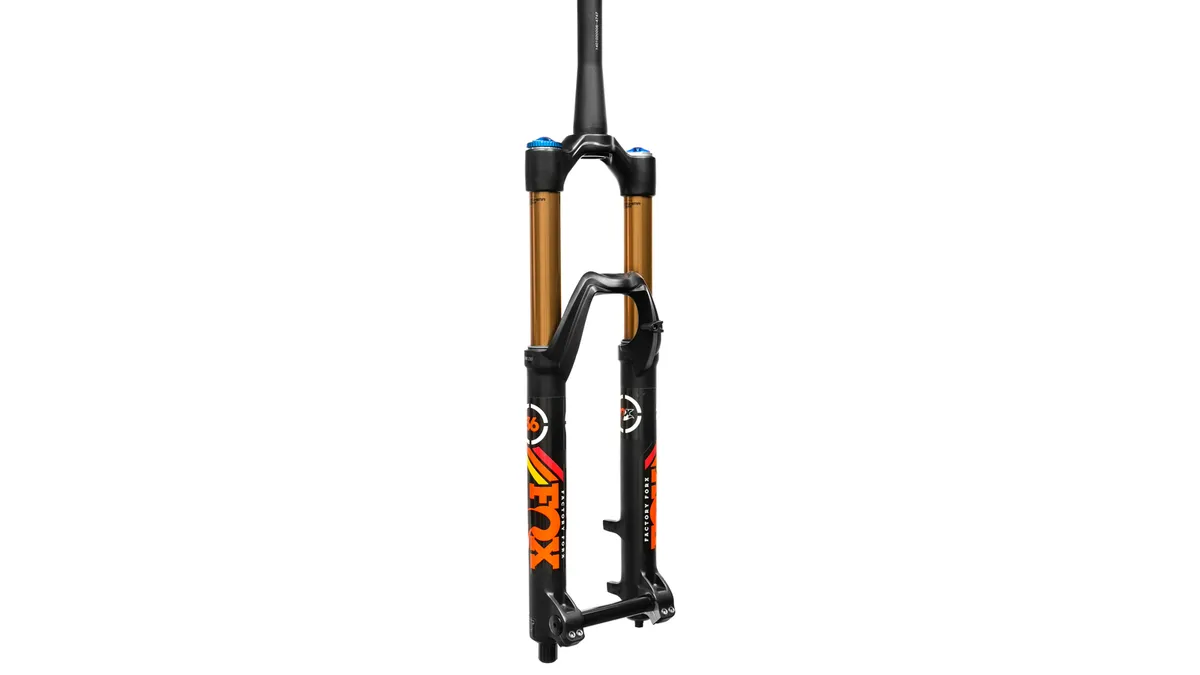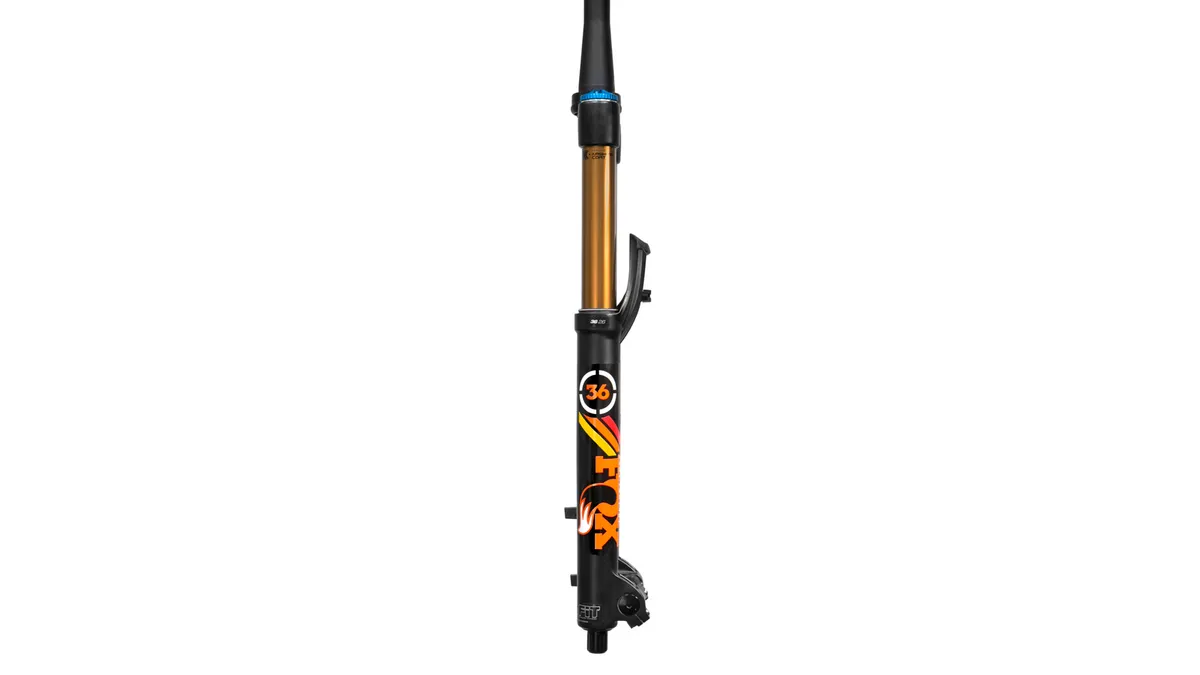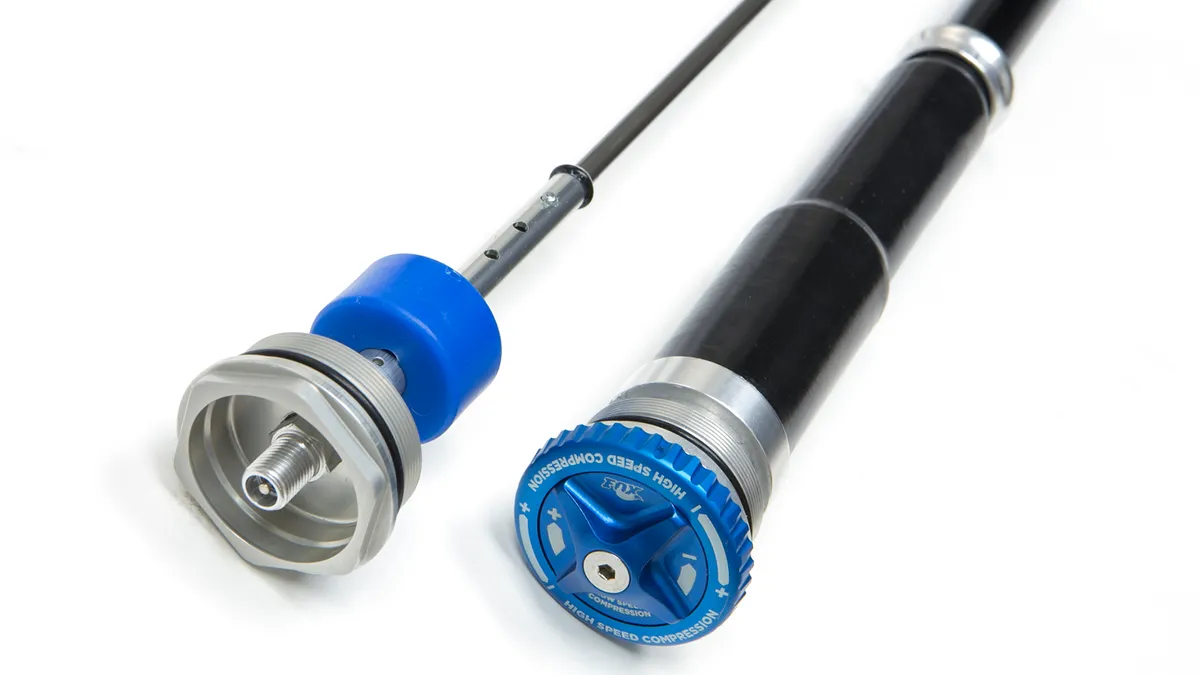BikeRadar sent MBUK’s Doddy and What Mountain Bike’s Tom along to BikePark Wales to hear about Fox’s developments for 2015, and for a chance to ride the all-new 36 fork.
Fox may well be one of the biggest names in the world of mountain bike suspension, but over the past couple of years it's had its critics. In light of this, many of the developments Fox has implemented into its 2015 range are aimed at addressing such criticism.
CTD improvements
Fox’s CTD (Climb Trail Descend) damping system has come under fire recently, with some feeling that there’s not enough mid-travel support in the Trail setting. Fox has tackled this for 2015, via updated cartridges. Fox’s FIT cartridge, the bladder system that separates the fork's air and oil, has been refreshed, with the maker claiming this gives a better transition between high and low speed compression.
At the top end Factory level, there are now seven positions of adjustment within the Trail setting, meaning riders should be able to better tune their fork.
Technical improvements
When it comes to high-end suspension forks and shocks, friction within the unit is a big contributor to relatively poor performance. Fox says it's been developing components with lower friction to improve matters.
Kashima coatings on the fork uppers now benefit from a new machining process, which Fox says makes the finish much smoother. This has been done in conjunction with the development of Fox 20W Gold Oil, whereby molybdenum, the slippery material in the Kashima coating, is also added to the oil.
The new FIT cartridge has been improved, including modifications to the shaft seal, which should help reduce friction.
Tuning
When a suspension fork leaves the factory, it is tuned to work for the average rider – and often this is a global average. Fox has been offering its RAD tuning service to racers and journalists, but for 2015 will be changing the system. RAD tuning will only be available to pros, while the rest of us can now benefit from the Tuning Program.
This requires you to send your forks to a dedicated tuning provider, where all levels of equipment can be tuned to your riding style and weight. Three levels of tuning will be available across Evolution, Performance and Factory forks. (In the UK, the necessary port of call is Mojo Suspension, in South Wales.)
Fox 36
One of Fox’s headline forks is the 36, which for 2015 has a brand new chassis for all wheel sizes and features 150-180mm travel.
Fox’s main goal on the 36 was to reduce weight, maintain stiffness, reduce friction and improve damping – and it's also added 15mm axle compatibility.
With claimed weights starting at 1901g, the 36 is now competitive in weight with some 34s. This has been achieved with new steerers, crowns, uppers, lowers and axles as well as a new air spring – it’s pretty comprehensive.
The lower legs have received some of the most attention, borrowing ideas from that on the 40. Bushing overlap has been maximised to reduce friction and wear, while the legs have been shaped to help reduce weight. The bolted axle system might not be the quickest to use, but again it's light and stiff.

The 36 is now compatible with both 15mm and 20mm hubs
Previous 36s were only compatible with 20mm axles, but a new conversion kit, which comes with the fork, enables those of us with skinnier 15mm hubs to get out and play on the 36 – and 180mm direct disk mounts now come as standard, avoiding the usual adapter. Fork rakes are specific to the wheel size and axle-to-crown lengths have been minimised: the 650b fork in 160mm is about the same axle to crown as the 2015 34 equivalent.
Internally there’s the new RC2 damper, which has a new tune and a new seal head design. Fox has used a lighter-weight oil to improve rebound performance. The Float air spring is also updated, enabling riders to add or remove internal spacers, adjusting the air volume and thus spring rate of their fork.
On top of this, travel adjustment is a quick job, with the forks adjustable in 10mm increments – 160mm forks can be dropped down to 110, while 180mm forks can go as low as 130mm.
Ride
For consistency we spent the day repeatedly hitting the same trail combination at Bike Park Wales – Wibbly Wobbly into Rim Dinger. These trails are sponsored by Mojo Suspension, and with good reason – it’s a rough place to ride at pace, especially on repeated runs, making it perfect for analysing the way the suspension feels, and the kind of shock transmitted through the handlebars.
Mojo mechanics were on hand to help, but the process of adjusting the high- and low-speed compression and the rebound is simple, so long as you remember the amount of adjustment you are adding or subtracting.
Starting with recommended base settings on our body weight and riding styles, we experimented with differing amounts of high- and low-speed compression. For the initial test we stuck to the base rebound setting, which offered a fast enough response on smaller hits – but enough to tame the fork through harder hits.
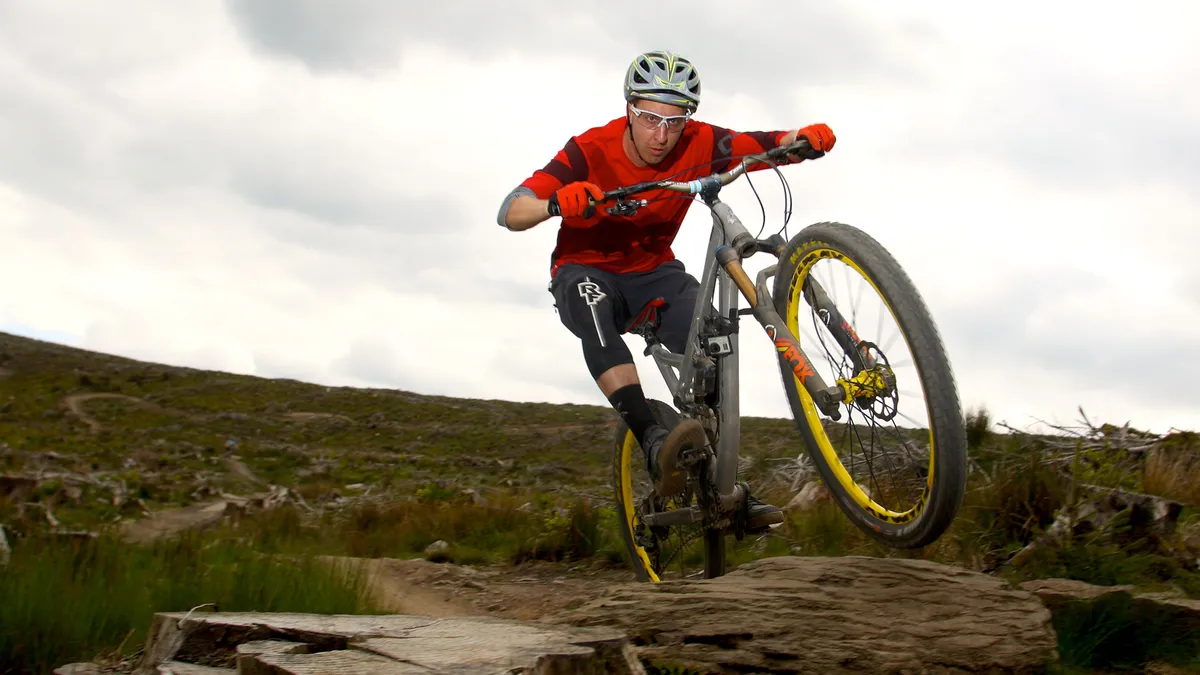
The new Fox 36 in action
We tried the fork nearer to fully open on damper settings to start, with minimal high-speed compression and enough low-speed compression to support the fork. It felt very active immediately, and the grip offered was outstanding – to the degree we expected the fork to dive and wallow like some other Fox forks have in the past, but it surprised us. Even pushing hard into turns, the fork had great midstroke support.
Normally we veer towards a firmer and more positive ride feel with around 25 percent sag, but we were running the 36 with 30 percent and were making the most of the more supple ride – without the vague feel that running more sag tends to offer.
We worked our way to about halfway in on high-speed compression damping, with about four clicks of low-speed compression, which we found spot-on for our test trail. This continued to give exceptional grip on the front end, though with more high-speed compression the fork felt more controlled through the rougher sections.
Interestingly, we could still feel the trail through the bars, but the shock transmitted to our hands was minimal. It’s a distinct feel that enables you to feel the grip and get feedback from the trail, yet not suffer the punishment that constant impacts put through the bars. This gave us a welcome feel of control and trust the whole time – and encouraged us to push our luck too.
The range of damping offered by the 36 is incredible, though it could be daunting for riders not understanding what they need from the fork. With help it’s easy to get the 36 dialled in, but set up wrong it could be overkill on many trails.
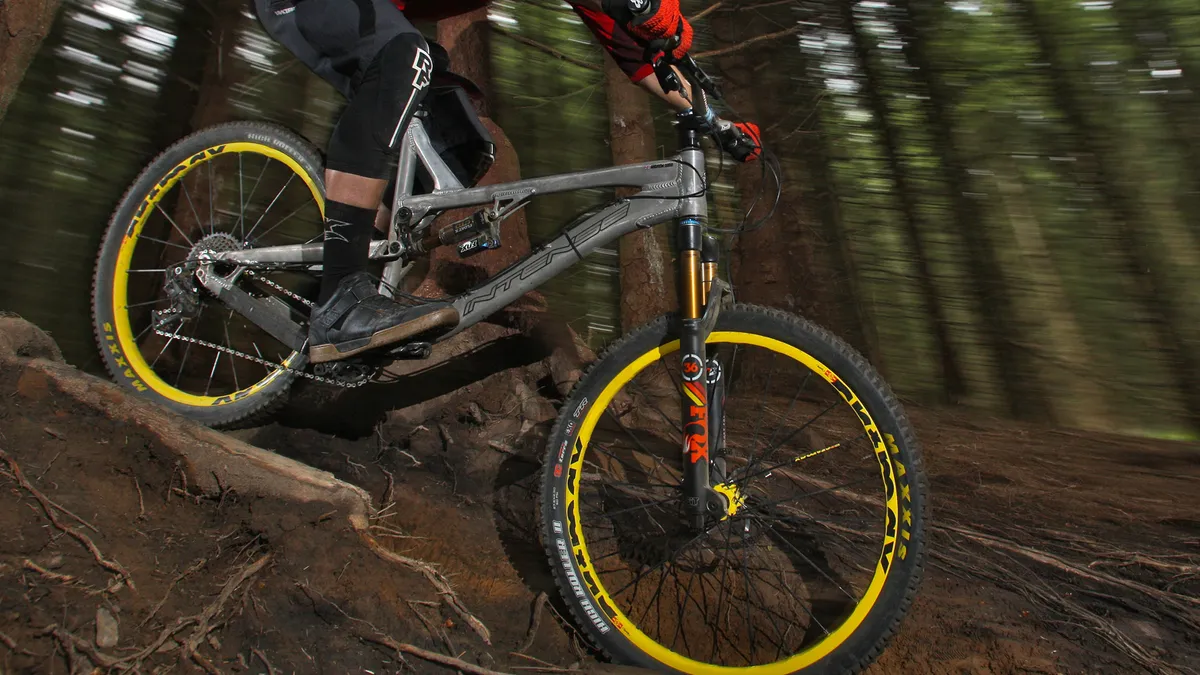
The 36 with its RC2 damper is a serious bit of kit
As a platform, the 36 feels significantly stiffer than the 34 – both torsionally and fore/aft. This alone will interest harder riders looking for the best performance, but the damping control on the 36 is the real selling point.
If easy settings and a straightforward three-step positioning for your day-to-day riding is what you look for, then the new 34 is probably the better fork for you with its CTD damper. The 36 with its RC2 damper is a serious bit of kit: if out-and-out performance in demanding terrain is what you're after, then look no further.

